Towards an agro-ecological village
at the Flora Community
Reducing greenhouse gas emissions through
organic based farming and energy self reliance
By 1Roger Samson, 2Louie Amongo,
2Emmanuel Yap, 3Teodoro Mendoza and
1Lindsey Mulkins
1 Resource Efficient Agricultural Production-Canada, Box 125, Ste Anne de Bellevue Quebec, Canada, H9X 3V9, REAP@Interlink.net, www.reap.ca
2 MASIPAG, #3346 Aguila St., Rhoda Subd., Bgy. Anos, Los Baños, Laguna 4030, Philippines, masipag@mozcom.com
3 University of the Philippines Los Baños, Department of Agronomy, Laguna 4031, Philippines, TCM@mudspring.uplb.edu.ph
Abstract
This case study examined the transition of a former haciendero owned sugarcane plantation in Negros Occidental, Philippines towards a diversified, self-reliant, agro-ecological village. In 1995, the Philippine Government awarded 76 hacienda workers with an 87 ha estate through the Comprehensive Agrarian Reform Program. The community received assistance in the areas of community organizing, farm planning, training in organic farming, and loan support from various social-welfare agencies. Since the land transition, Flora has reduced its sugarcane production and diversified into growing organic rice, corn and vegetables.
The Flora community has become more food and energy self-reliant through its transition into an agro-ecological village. Organic based farming practices are being used in communally farmed areas and in most individual farms. Sugarcane and high value vegetables are the main products sold off the farm. Rice is the community’s staple food, and is produced according to the MASIPAG rice farming system. Nitrogen sources for rice production include N fixed during straw decomposition and the use of azolla, a nitrogen-fixing aquatic plant. Mudpress from sugarcane processing and rice hull ash are also used as nutrient sources.
In sugarcane, a system of continuous trash farming is being implemented to encourage nitrogen fixation and soil carbon accumulation from cane litter. Another practice to minimize the need for fossil fuels is the use of 143 water buffaloes (carabaos) for tillage and on-farm hauling. Efficient rice hull cookers have also been introduced to minimize LPG (propane), kerosene and wood fuel use in home cooking. The Flora Community appears to be evolving towards an agro-ecological village that largely meets its food security, on-farm energy, and income requirements, while minimizing local environmental impacts, and greenhouse gas loading into the biosphere.
Introduction
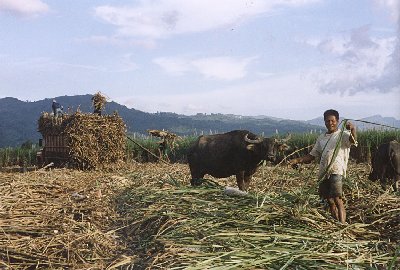
Figure 1. Growing sugarcane enables Flora
farmers to use 143
carabaos for farm power, largely
eliminating the need for tractors (Click image to enlarge).
In the sugar growing regions of Negros, much of the land base is under the control of wealthy hacienderos and is maintained in intensively managed monoculture sugarcane plantations. This situation has created major social and environmental problems. One of the challenges in the Philippines presently is the successful and rapid transition of sugarcane haciendas into productive small farm units through the Comprehensive Agrarian Reform Program. This case study highlights the efforts of the Flora Community in making the transition towards self-reliance using organic based farming practices and renewable energy systems. This transition to organic based farming practices, combined with increased food self reliance and avoidance of fossil fuel use, creates a more ecological way of living within this agricultural community, hence we use the term agro-ecological village. The overall guiding concepts of the agro-ecological village approach are outlined in table 1, and examples of differences between ecological and conventional approaches are contrasted.
Table 1. An agro-ecological village approach to rural development in the Philippines.
|
Activity |
Ecological System |
Conventional System |
| Overall
Approach |
|
|
|
Food Supply |
Internal and plant based, emphasizing on-site production of seasonal vegetables, rice, corn, root crops, fruit, fish and eggs |
Much food imported into community including rice (through loans), canned and dry fish, processed foods, livestock feeds |
|
Soil tillage and on-farm hauling |
Use of carabaos (water buffalo), maintenance of population through reproduction |
Use of tractors that need maintenance and replacement |
|
Nitrogen Fertility |
N fixation through sugarcane trash farming, nitrogen fixing legumes, azolla, mudpress, soil mineralization, carabao dung |
Urea fertilizer |
|
Minerals |
Erosion prevention, recycling of rice hull ash and mudpress, addition of carabao dung, maintenance of good soil structure |
Potassium and phosphorus fertilizer |
|
Seeds |
Community seed banking of open pollinated seeds, new seeds assessed in trial farms, ongoing on-farm plant improvement |
Purchased hybrid seeds, no local adaptation trials, seeds derived from corporations, transgenic seeds being developed |
|
Weed Control |
Mechanical weeding devices, crop rotation, good soil fertility management, mulch farming |
Herbicides and tillage |
|
Insect Control |
Biological control strategies, resistant cultivators, balanced fertility |
Insecticides |
|
Disease Control |
Resistant cultivators, diverse cultural management strategies |
Fungicides |
|
Irrigation |
Modest requirement and used efficiently, supply provided by water catchment ponds, windmills etc. |
Gasoline/diesel powered pumps |
|
Crop drying |
Use of solar or biomass energy |
Fossil fuel powered crop dryers |
|
Marketing |
Emphasis of internal self reliance first, then import displacement in local markets and value added processing |
Monoculture production emphasized and products sold to distant markets in the country or exported |
|
Household cooking |
Use of rice hull cookers, efficient wood stoves, biogas, all biofuels derived from the farm |
LPG fuel stove, open fire cooking, kerosene as fire-starter, fuelwood gathered off farm or purchased |
|
Electrical power |
Low demand coupled with renewable energy sources like solar and micro hydro |
High electricity requirement, energy derived from fossil fuel based mega-projects |
|
Housing |
Bamboo, farm derived wood, rammed earth |
Cement block housing |
Many of the background features necessary for a successful conversion to an agro-ecological village are now in place in the Flora Community. These include land security, good community organization, sound exposure and training in organic based farming practices, and finally, sufficient financing to get through the transition process (see Appendix IV). Members of the community are now in the process of identifying and implementing appropriate ecological farming and renewable energy systems within their farms and households (Table 1). They foresee these features as the basis for improving the quality of life for the community, while at the same time recognizing their importance for minimizing impacts on the local environment and biosphere. This agro-ecological village approach represents a possible new model for development that achieves poverty alleviation, mitigation of greenhouse gas emissions and environmental remediation.
Current status of the community
The Flora community is located in Negros Occidental, approximately 3 km southeast of the city of Kabankalan. The lowland soils in the Kabankalan area are amongst the most productive soils in the Philippines. The soils of the Flora community include these soils as well as sediment deposited over the years from the Hilabangan River. The predominant soils are sandy loam (64%), sandy (27%) and silt loam (9%). The land base supports the livelihoods of 76 farmers and their families (approximately 375 people). A household survey of the community was performed in 1998 (Appendix V). The main crops grown are sugarcane, glutinous and white grain corn, rice and vegetables (primarily eggplant, squash, sweet corn and radish). Peanuts, bush sitao and mungbeans are also grown on a limited hectarage.
The community has had a long struggle to gain land ownership (see Appendix I). In 1996, through the Comprehensive Agrarian Reform Program the 87-hectare hacienda was divided into individual and collective farm lots. Each member was awarded a 0.82-hectare farm to cultivate with any kind of crop. Additionally, the community runs collective farms, consisting of a 14-hectare sugarcane field intercropped with corn, and a 3.7-hectare farm planted with fully organic MASIPAG rice selections. To create a more organized and collective decision making structure, and to facilitate farm management, the community has formed a farmers association, the Pag-amlig sang Grupo nga Lalambuton sang Asosasyon sa Pag-uswag sang Mangunguma (PAGLA-UM) Association.
Minimizing greenhouse gas emissions
The community is trying to become more food self-reliant, organic in its production systems, and non-dependent on fossil fuels for farm and household applications. These activities lead to reduced loading of greenhouse gases into the biosphere. Some of the key components of the agro-ecological village that make for limited emissions of greenhouse gasses include:
Animal power
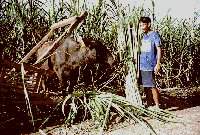
Figure 2. Like many farmers in the Flora
community, Nonong de Guzman feeds his carabao sugarcane tillers and cane
tops (Click image to enlarge).
Approximately 90% of the community’s energy requirements for soil tillage, land preparation, weeding, and on-farm hauling are provided through animal power. The community has 143 working carabaos plus their calves. They are primarily fed sugarcane tillers and cane tops at the time of sugarcane harvest. Other food sources for the carabaos are waste vegetables and green corn stalks. Carabaos are also allowed to graze the riverbanks as well as the rice paddies after harvest. In the future, it may be possible to introduce methane digesters into the community to convert the carabao waste into a convenient cooking gas. Presently this lost energy is a source of greenhouse gas emissions.
Fossil fuel use for soil preparation is limited to the rental of a 50 HP tractor for soil preparation that converts former sugarcane lands into annual crop production. Gasoline powered hand tractors are used in the rice paddies to provide finishing work. On- farm hauling of most farm production is provided by the carabaos hitched to wheel carts. A gasoline-powered motor pump provides irrigation water to the fishpond and rice paddies. The community is looking into the possibility of a windmill to supply water-pumping needs in the future. Additionally, a river-flow powered swing pump has recently been accessed to supplement water-pumping requirements for the community.
Minimized field burning
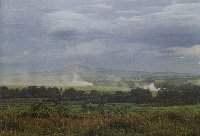
Figure 3. In the Philippines, 90% of
rice straw is burned from piles, which remain in fields after threshing.
In the MASIPAG rice farming system, this carbon is recycled to the soil
through straw reapplication and decomposition in the field (Click image to enlarge).
It is estimated that 90% of the rice straw in fields and 64% of the sugarcane fields are burned in the Philippines1. The Flora Community has entirely eliminated straw burning in rice paddies. Rice straw is field composted after harvest through direct spreading in paddies after threshing. The normal practice in the Philippines is to burn rice straw directly from the threshing piles. Field residues are also being maintained in the sugarcane fields. In 1999, some members in the community began using a pre-harvest detrashing system for sugarcane management. In this system, the lower leaves of the cane are manually removed three months before harvest and then left as mulch on the soil surface. They are largely decomposed by the time of harvest. Trash is also conserved in the field after harvest and allowed to decompose naturally. The only time sugarcane fields are scheduled for burning in the future is when fields are converted to annual crop production after the final ratoon (regrowth after harvesting). As an alternative to burning, this biomass may be able to be sold to sugar mills as a boiler fuel to replace imported bunker fuel oil in the future.
Minimized fertilizer and pesticide inputs
The use of fossil based energy inputs for fertilization is minimized in the crop production systems through a number of ways. These include conservation of crop residues (which fix N during decomposition), use of azolla (a nitrogen fixing floating plant) in wetland rice, recycling of rice hulls onto the fields, use of mudpress (a byproduct of sugarcane processing), use of carabao dung, and cultivation of nitrogen fixing legumes. Cultural practices have been implemented to eliminate the use of herbicides and fungicides. Insecticides are limited to applications on selected vegetable crops. Cultural control strategies are being explored to eliminate/minimize these chemicals in the future. The specific practices used will be discussed in greater detail with each crop.
Minimal fossil fuel use in household energy applications
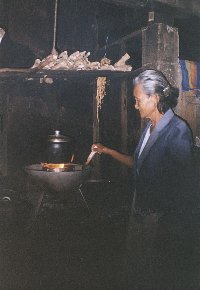
Figure 4. The Lo-Trau rice hull
cooking stove is an efficient, clean-burning and convenient alternative to
firewood-based stoves, which can greatly improve the lives of women
(Click image to
enlarge).
The main energy demand in the household is for cooking. In the past, the community has largely relied on firewood deposited during river flooding events as their main fuel source. Deforestation of the watershed has greatly diminished this supply. Members in the community also supplement this supply with crop residues such as eggplant stalks and corncobs. As a result of problems locating biofuels and for reasons of greater convenience, about 15% of the households have made the switch to LPG (propane).
In 1999, the Lo-Trau rice hull cooking stove was introduced into the community as a means to utilize a community waste product. This stove has proven much more convenient than firewood stoves for cooking, as water can be boiled in 5-7 minutes (versus 15 minutes for firewood). In addition, there is minimal smoke, fire starting is easy, the heat output is high and it can be easily controlled. Once lit, the stove will also efficiently burn corncobs, coconut husks and firewood pieces in its central chamber. The Lo-Trau rice hull cooker provides a lower annual cost for cooking than other fossil fuel or biomass cooking options2. Some community members believe that this cooking technology will largely discontinue the use of LPG for many members as well as reduce the dependency for firewood, charcoal and kerosene. Kerosene is widely used for fire starting in the rainy season when wood fuel is wet3. The use of rice hulls as a cooking fuel has no net impact on greenhouse gas loading as it is a closed loop biomass energy source4.
Power consumption is minimal in the community. Most electrical demand is for lighting and most members have installed compact florescent lighting. Only a few members have refrigerators, which are mainly used for chilling beverages.
Food self-reliance
The conventional food system is a major source of greenhouse gas emissions globally. For example, the US food system consumes 15% of the country’s total energy, which includes energy for agricultural production, processing, wholesale/retail, transport, restaurants, and home preparation. On average, food travels 2000 km prior to consumption5. While no similar studies are available in the Philippines, it is easy to grasp that urban dwelling Filipinos will have much higher greenhouse gas emissions associated with their food system than the community-based food production system of Flora.
Almost all the community member’s food is obtained directly from the community’s own organic-based production systems. Flora has steadily reduced its purchased food requirements from outside sources by diversifying away from sugarcane production and into food crops. The diversified production also reduces food security risks from the vagaries of the weather and /or pest and disease outbreaks. Since rice is the major staple food in the lowland areas of Negros, a major initiative for the community’s food self-reliance was its expansion into rice production. Approximately 5 ha of communal rice are planned for the Flora community in the year 2000, which will produce an estimated 33 tonnes of milled rice for the community.
Other major staple foods grown in the community are glutinous and sweet corn, squash, sweet potato, gabi and cassava. The major vegetable protein sources grown are mungbeans, bush sitao and peanuts. The expansion into vegetable production provides the members of the community with a steady supply of nutritious vegetables. Bananas are also being planted around communal farm areas. In 1999, the community also began rearing ducks as a component of its rice production. This reduces the members' purchases of meat and eggs from the market.
Fish production has been introduced into the community recently as a means to reduce outside expenditures on dried and fresh fish. A 3m x 3.5m tilapia fishpond was constructed to serve as a permanent refuge for the fish. The fish have also been introduced into paddies adjacent to the fishpond. These paddies are managed with elevated water levels for combined rice/fish culture. The fishpond and drainage ditches are planted with gabi (taro) and pole sitao (climbing beans) for home food consumption.
Overall, the introduction of a diversified farming system has:
- greatly improved the diets of the members of the community
- increased their food security
- created a more ecological food system that reduces greenhouse gas loading into the biosphere.
Food production systems used in the community
Rice
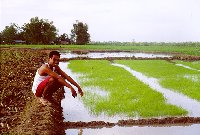
Figure 5. The Flora community has successfully introduced the MASIPAG rice farming system. The developing rice seedlings are regularly inspected for growth prior to hand transplanting (Click image to enlarge).
The introduction of rice farming is a central part of the community’s plan for increasing food self-sufficiency. The community is fortunate to have a year-round water supply readily available from the Hilabangan River that runs through the estate. An irrigation pump purchased in 1999 enables the community to grow 2.5 rice crops per year. They are currently cropping 3.7 ha of rice, with expansion plans for 5 ha in the year 2000. This will provide about 75% of the community’s rice needs. Yields are approximately 100 cavans/ha (4 t/ha), which are slightly above conventional rice yields in the Kabankalan area. The palay (unmilled rice) is dried on a solar dryer in the community (which also doubles as a basketball court and courtyard for community events). The staggered planting of several varieties of rice with different maturity dates enables the harvesting period to be extended and makes solar drying a relatively reliable system for palay drying.
The palay is milled on site by a mobile rice mill that is rented from a nearby farmer training and service center (KALIBUTAN). This mobile rice mill reduces transport costs and hauling time. As well, it enables the rice hull to remain in the community. This is highly desirable, as community members have begun to use it for cooking. The residual ash from rice hull cooking can be recycled into bio-intensive gardens, seedbeds or rice paddies to help close the nutrient cycle. Alternatively, rice hulls produced by large stationary mills result in a disposal cost. They are usually dumped in wet places or burned in piles.
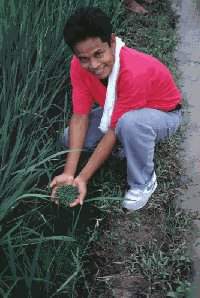
Figure 6. Francisco de Guzman, the former
chairperson of the PAGLA-UM association, displays azolla, which fixes
nitrogen and maintains soil fertility for rice production (Click image to
enlarge).
The community has been able to successfully implement the MASIPAG rice farming system. The communal management of the rice paddies has helped facilitate this process as the system is knowledge intensive and farmers can share their experience. The MASIPAG rice farming system eliminates the need for fossil fuel based production inputs. It also has the advantage of being a low capital intensive farming system that reduces the loan requirements for the farmers. The successful implementation of the ecological rice production systems was achieved through farmer training, assistance from site visits by agronomists and through previous rice production experiences of some of the farmer leaders. Key components of the MASIPAG system include establishing small trial farms to identify productive and disease and insect resistant varieties of rice. The most popular MASIPAG rice lines in the community presently include F-12, M50-1, M22-2-B2, and M2-9AN. Each cropping season, a new rice trial farm is established to ensure the entry of improved plant materials on an ongoing basis. In the MASIPAG system, the rice is transplanted in approximately 30-cm rows. Using carabao, farmers plow the ground deeply to help the rice crop form deep roots to improve nutrient uptake. Secondary soil preparation is completed with rice paddy hand tractors and/or carabao.
Soil fertility in the rice paddies is maintained by mulching the rice straw back into the paddies after harvest, which fixes nitrogen and carbon during its decomposition. Traditionally, rice hulls have been returned to the soil after threshing, but this practice is now being discontinued as the community is beginning to use the rice hull for domestic cooking. The resulting ash can be recycled into the soil, providing a valuable nutrient source and stimulating soil biological activity. Mudpress is also applied periodically to the rice fields. It is a byproduct of sugarcane processing and is obtained locally from the nearby sugar mill for the trucking cost. In addition to the nitrogen fixation from the decomposing rice straw, azolla, a floating aquatic plant, is grown underneath the rice as a source of nitrogen. It is incorporated into paddies at the time of plowing and re-multiplies during the new crop establishment. The year round water supply of the community combined with the use of a fishpond enables the community to maintain a permanent source of azolla.
No fungicides, herbicides or insecticides are used in the rice fields. Disease pressure is minimized by the production practices used, including relatively low planting density, wide row spacing and the planting of disease and pest resistant rice planting materials. As well, the fields are planted in an east-west orientation to facilitate air movement through the paddies and minimize crop shading.
Insect management is performed through field screening to establish a diverse group of resistant rice cultivars. The most serious pest problems in Negros are black bug and the golden kuhol snail. Black bug is managed through manipulating water levels at critical periods of rice development. Golden kuhol (golden snail) levels are managed by keeping low water levels after transplanting. They are also lured away from rice by supplying gabi (taro) leaves, a preferred food of the golden kuhol. In this system, chopped gabi stems and leaves are broadcast for a period of 25 days in the low lying sections of paddies where golden kuhol are concentrated. After this period, gabi feeding is discontinued as the MASIPAG rice seedlings are sufficiently developed to suffer limited damage from the snails. The paddies are then flooded to encourage the snails to eat the young growing weeds throughout the field area. Ducks are also used in the paddies to keep the golden kuhol populations in check. Additional rice seedlings are planted into damaged areas to recover any potential yield loss.
Weeding is performed through a series of techniques. The first step is to draw a row marker through the field prior to transplanting, so that the rice can be precision hand planted, to assist later mechanical row weeding operations. For control of juvenile weeds, the farmers at the Flora Community are using the aforementioned gabi/golden kuhol cultural control strategy. Supplementary weeding is performed using a one row push type "cono" weeder that is rolled between rice rows. Together these practices greatly minimize the need for labor intensive manual weeding. The floating azolla also provides a weed control effect by blocking sunlight from hitting the soil. It is particularly valuable in preventing late weed flushes.
A basic tenet of sound ecological agricultural systems is to have multiple means of supplying important functions to increase the stability of the system. The community appears to have created simple, diverse means of providing important production requirements such as weeding, soil fertility management and disease control. The 20 years of experience in the Philippines with MASIPAG rice farming systems has enabled farming communities like Flora to have a sound plant material and knowledge base to make the transition into organic rice production relatively easy. Equally sophisticated and reliable organic farming techniques and materials need to be developed for corn, sugarcane and vegetable production in the Philippines.
Sugarcane
Because the main crop grown at the former hacienda was sugarcane, the Flora farmers have a great deal of experience with its cultivation. Sugarcane is generally planted for a three-year period with harvest every 9-10 months, and is usually kept for two to three ratoon crops (regrowth crop following cutting). It is planted in 92-cm rows with about 50,000 to 60,000 cane points per ha. The conventional practice in the southern Negros region is to grow sugarcane with relatively high doses of fertilizer and pesticides and to burn the trash after harvest. In recent years the fertilizer rates have been increasing as a means to try and counter declining sugarcane productivity. Current estimates of sugarcane fertilization levels in the Philippines are 209 kg N/ha, 55 kg P2O5/ha, and 74 kg K2O/ha per year. This fossil energy is equivalent to 607 l/ha diesel oil equivalent.6
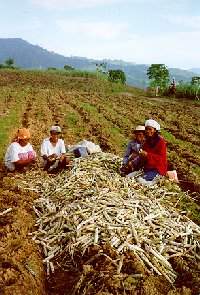
Figure 7. Flora women prepare cane points for
planting the new cane crop
(Click image to enlarge).
Persistent soil herbicides such as simazine are used for weed control. Crop residues are typically burned after harvest to prepare for the next cropping cycle. This cycle of production is depleting soil organic matter levels and contaminating ground water, as nitrogen fertilizer and persistent soil herbicides readily enter into the high water table. As well, crop burning is detrimental to biodiversity. It is a major cause of declining snake, wildcat and ground nesting bird populations. Crop burning destroys the natural predators of rats, which subsequently leads to major problems in crop loss, particularly with rice.
The community has recently begun implementing trash farming into its sugarcane production systems. After harvest, crop residues are no longer burned but are maintained on the field and allowed to decompose naturally (similar to the rice system). High levels of nitrogen fixation can be achieved using this management system6. Consequently, nitrogen fertilizer use in the community is being reduced as the cane trash farming system is being implemented. On their individual and communal farmland, the Flora farmers are currently using about half the nitrogen fertilizer of conventional sugarcane. With the changing cultural practices, the optimal fertilization level is yet to be determined.
A further modification to trash farming was also introduced into the community in 1999, which was to manually detrash the canes 3 months before harvest. This is done using a machete. This practice can result in near complete decomposition of the trash by harvest time. It greatly speeds up harvesting and allows the farm workers to cut the cane at a low height. New cane varieties are currently being planted which are self-detrashing. These are varieties that have leaves that drop off the plant following senescence. A pre-harvest detrashing or self-detrashing cane enables a near continual trash decomposition process to be present in the field. The implementation of a continuous trash farming system will help increase soil organic matter, improve water relations for the cane, enhance weed control, and minimize lodging from typhoons. Trash farming of sugarcane should enable further reduction in fertilizer use to be achieved as the soil fertility gradually improves. In tropical agriculture systems, growing perennial crops such as sugarcane, and practicing trash farming, is one of the only means of improving soil fertility without outside organic matter inputs7.
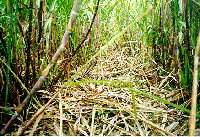
Figure 8. A system of pre-harvest cane
detrashing is being introduced in the Flora community to improve soil
fertility, conserve moisture, suppress weeds and reduce crop lodging
(Click image to
enlarge).
Detrashing of the cane leaves usually occurs in the rainy season when labor demand is low on the farm. This also improves labor use in the community at harvest time as the labor required for cleaning cane at harvest is greatly reduced. Another benefit of the system is that it reduces the volume of cane trash present after harvest. Excessive trash can be a problem for management of cane trash in highly productive sugarcane fields. The main time cane is currently burned in the Flora community is during land conversion following the final ratoon crop. It may be possible in the future that this material could be harvested as a biofuel for sugarcane boilers or for the production of fuel pellets for household cooking8.
The main disadvantages of trash farming are the increased fire risks and increased labor costs. The fire risks are greatly reduced because of the relatively small field sizes at the Flora community compared to the larger haciendero-owned plantations. As well, cane trash is usually piled in alternate rows to minimize fire risks and enable cultivation between every other row. Labor costs for trash farming are offset by reduced input costs and increased cane productivity. Yields typically increase 20-30% in ratoon crops when trash farming is practiced9.
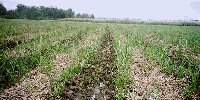
Figure 9. After cane harvest, a young ratoon
crop emerges in a trash-farmed sugarcane field. Research studies of cane
trash farming have identified yield increases of 5, 21, and 30% in the
plant, first ratoon and second ratoon crops, respectively (Click image to
enlarge).
Weeding requirements in trash farming are reduced because every other row is mulched with trash after harvest. This mulch effectively suppresses weed growth. Weed control in trash-free rows is performed by off-barring (shallow plowing) with carabao. Inter-row areas are shallow-plowed three times for weeding. Plowings are used to remove weeds from each edge of the row, and a third time through the center of the plot to hill the row on the final pass. Hand weeding is also performed whenever necessary, particularly to remove climbing vines. Generally, the crop is grown as a 9-10 month crop. Average yields in the community are typically 70 tonnes/ha.
Corn
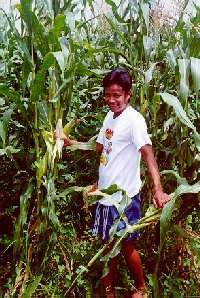
Figure 10. An open-pollinated glutinous corn is
grown by the Flora community during the rainy season for food security and
market sale (Click image to
enlarge).
Three different types of corn are grown in the community. During the rainy season, glutinous and sweet corn are grown, and are both harvested fresh. To provide security from spoilage, white grain corn is planted so that harvesting can occur in the dry season. Glutinous corn and sweet corn are used for home consumption (roasted or boiled) and for fresh market sale in Kabankalan and Bacolod. White grain corn is primarily sold to buyers in Cebu where it is more widely eaten than in Negros. Harvesting fresh glutinous corn and sweet corn enables the stalks to be harvested for fodder for the carabao. Unmarketable cobs, not used for home consumption, are also fed to carabao, chickens and pigs. Traditional varieties of glutinous corn and white corn are available in the community as a seed source for these crops. Hybrid sweet corn seed as well as some hybrid white corn seed are also purchased. Recently, MASIPAG has started collecting white grain corn varieties in Negros and other regions of the Philippines. A small plant material collection center and breeding nursery has been established approximately 10 km from the community. These materials are to be tested by the Flora community in the future, in much the same way as rice materials are evaluated.
The white grain corn crop is planted as a main crop. It generally yields about 4.4 tonnes/ha and is harvested in about 90 days. The corn is seeded in 75-cm rows. Two seeds are hand planted in hills 35 cm apart, providing a seeding rate of 38,100 plants per hectare. Weeding is performed by hand in the row and by shallow plowing with carabao between rows. The crop is fertilized by hand around each individual hill, using an actual fertilizer application rate of 38 kg N –8 kg P205-8 kg K20/ha.
Sweet corn and glutinous corn are frequently intercropped into the sugarcane and are harvested in 60-65 days. During the establishment of the sugarcane, every second row of cane is planted with a nurse crop of corn. This minimizes the shading effects on the slower-to-establish sugarcane. Glutinous and sweet corn is planted into gaps in the sugarcane ratoon. This is primarily done on the older ratoon crops. The green glutinous and sweet corn crop are harvested after approximately 60 days which minimizes light interference with the sugarcane. When corn is grown as a dedicated crop, sometimes it is also planted with an understory of squash. The community is testing a cropping system for more ecological corn production, which includes the planting of pigeon peas with squash and white grain corn. The system is designed to be planted in June or July and has three rows of corn alternating with a row planted with both squash and pigeon peas. In this "Philippine Three Sisters" system, corn harvests first in 90 days, followed by squash in 120-150 days followed by pigeon peas 180-250 days (i.e. the dry season January-April). This system enables one soil preparation for three crops, and allows the pigeon pea to fix nitrogen and make use of limited soil moisture during the dry season.
Weed control practices in corn are similar to those used for sugarcane and include three shallow plow passes with the carabao. There remains much work to be done to make corn production more ecological in the Philippines. Practices need to evolve which simplify weed control, reduce erosion and minimize soil fertility problems. This is particularly true for hilly upland farms where corn farming is more popular.
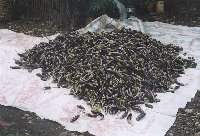
Figure 11. Eggplant is one of the highest
income-generating crops in the Flora community. Agrarian reform
communities like Flora are expanding local availability of high quality
and low cost vegetables for consumers in Negros (Click image to
enlarge).
Vegetables
The main vegetables grown on the farm include eggplant, squash and radish. Eggplant is grown on approximately 10 ha and it is the highest income-earning crop in the community in most years. Squash is mainly grown late in the rainy season on approximately 5 ha, with the biggest production occurring in the January-March period. Radish is grown year-round on approximately 2 ha. It is primarily grown on sandy soils and late in the rainy season. Smaller areas of pechay (bok choy), green beans and peppers are also grown. A trial community vegetable farm has been established to test new vegetables and new seed introductions of existing vegetables. Some of the main new crops being tested include peppers, bitter gourd, tomatoes, mustard, watermelon, carrots, yard long beans, bush sitao, soybeans, onions and cucumber. The vegetable trial farm is resulting in some of the members scaling up crops such as watermelon and bitter gourd on their individual farms (Appendix II). The community feels this vegetable diversification activity is important because the increased production capacity from agrarian reform communities like Flora is seasonally flooding local markets with eggplant, squash and radish, thus depressing prices. The community realizes that two potential strategies are available to deal with increasing local supplies of the more commonly grown vegetables:
- Sell produce at more distant markets such as Cebu City where eggplant and squash prices are considerably higher; and
- Diversify vegetable production
and focus on displacing vegetables such as onions and watermelon, which
are imported from outside the region.
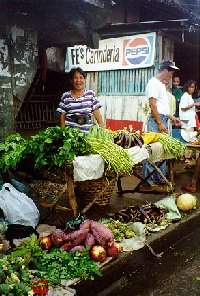
Figure 12. Diversified farming at Flora and other nearby communities is increasing the range of foods grown and marketed by women (Click image to enlarge).Currently most of the eggplant, squash and corn is marketed locally either in Kabankalan or Bacolod. It is transported by tricycle (motorcycle with sidecar) to Kabankalan or by jeepney (small bus) to Bacolod. If more diversified vegetable production could be achieved, it may be possible to market directly in neighborhoods in Kabankalan using bicycles. Direct neighborhood marketing is presently used in Kabankalan for sale of fish and eggs.
Cultural practices
he eggplant crop is grown for approximately 12 months. Farmers are growing a well-adapted native strain from the Kabankalan area. The crop is grown from seedbed nurseries in the field and transplanted into 1 x 1-meter spaces. Hand weeding is used around plants for early season weed control. Following establishment, an understory of grass is managed in the crop to keep more problematic weeds in check and to maintain soil fertility. Production starts about 3 months later, and the crop is harvested approximately every 3 days.
Squash is generally planted at 1.5 x 1.5-meter spacing and is grown as a 5-month crop. A new squash (Rizalina) has been introduced into the community to expand production in the rainy season. Covering of blossoms with squash leaves (which are removed and turned upside down) is practiced to minimize fruit rot due to water build-up during early fruit formation.
Of all the crops grown on the farm, vegetables are sprayed with the most pesticides. Radish and pechay are commonly sprayed with insecticide to minimize damage by leaf feeding insects. Some insecticides are also applied in eggplant to reduce fruit borer problems. The eggplant borer problem could potentially be controlled if a widespread sanitation policy was implemented in the community. Birds are the major predators of the eggplant stem borer. Unlike much of the Philippine rural areas, slingshot killing of birds has been discontinued in the community.
Cultural control approaches are being explored to minimize pesticide use in the future. Some of the approaches to be assessed will be to plant long single strips of vegetables to minimize disease and insect pressure for organic vegetable production. As well, natural areas will be encouraged along field borders to encourage predatory insects.
Eggplant and squash seeds are saved within the community. Radish and pechay seeds are purchased as they are unreliable seed producers. Women are largely responsible for seed saving in the community. Efforts are being made to improve seed storage practices.
Summary and Conclusions
he Flora Community has had a solid grounding from which to undertake the transition towards an agro-ecological village. This background preparation (see Appendix I) has helped nurture the development of an empowered group of farmers determined to take full control of their future. They see the evolution of an agro-ecological village as a means to express their empowerment, enhance their food security, and minimize their vulnerability to the vagaries in the weather or fluctuations in fossil fuel prices and changes in market conditions.
Organic based farming systems development is the focal point from which the agro-ecological village evolves. The community has benefited from the presence of a number of organizations specializing in sustainable farming systems research and development to develop their systems. These include PDG, MAPISAN, MASIPAG, REAP-Canada and University of the Philippines Los Baños-Department of Agronomy. This synergy of activity has helped the community’s exposure to many ideas that they are now integrating into their individual and communal farms.
The gains made by the community in farming systems development include:
a. largely resolving food self reliance and food security problems
b. producing MASIPAG rice yields which are amongst the highest in Negros,
- becoming one of the most productive lowland communities in vegetable production in southern Negros Occidental.
- maintaining a MASIPAG rice trial farm and a vegetable trial farm
- dramatically reducing crop residue burning
- initiating a low input, continuous trash farming system for sugarcane production
- reductions in overall indebtedness problems in the community
- supporting a large number of people from a small land base
Some of the farming system needs of the community include:
- further improvements in soil fertility management particularly for corn and vegetable production
- wider implementation of organic based farming systems in the individual farms
- planting of windbreaks, bamboo and fruit trees
- improving cultural control strategies for pests in vegetable production including: practicing better sanitation in dealing with infected fruits, planting more diverse plantings and leaving uncultivated strips for beneficial insects
- assisting the recovery of the natural predators of rats through creating suitable habitats for snakes, wildcats and owls
- implementing a buffer zone along the river banks to reduce soil loss
In the renewable energy/energy efficiency area, the community has also made significant gains including:
- nearly eliminating the requirement of farm tractors and fossil fuels for soil preparation and hauling in the community by using 143 working carabao
- modernizing household cooking through the introduction of rice hull cookers to replace LPG use and reduce wood fuel and kerosene for firestarting
- installing a solar dryer in the community courtyard for palay drying
- using a mobile rice mill for rice processing which reduces energy costs for transporting unmilled and milled rice and leaves rice hulls in the community as a fuel source for domestic cooking
- obtaining a river-current driven swing pump for irrigation of farms near the river
The main features that need to be developed further to reduce fossil fuel energy requirements in the community are:
- more widespread diffusion of rice hull cookers into households
- introduction of methane digesters to produce biogas from carabao dung,
- use of a windmill to pump river water for the rice paddies,
- explore lower energy alternatives to cement block housing such as steel framed- bamboo housing and rammed earth block housing
- more ecological transport systems for people and goods out of the community and to further develop more local markets for the community’s products
The evolution of agro-ecological villages appears to be a promising approach that can respond to the difficult tasks of poverty reduction and global reductions in greenhouse gas emissions. It is evident that this agro-ecological village approach will have very low CO2 emissions for several reasons:
1. Food self reliance from an organic, animal powered and plant-based diet brings the communities’ food energy requirements to a small fraction of the 1400 liters of gasoline equivalents per capita consumed by the conventional food system in the US.
2. By using rice hull and wood fuel cooking (and potentially biogas in the future) the communities’ greenhouse gas emissions for household energy will also be minute compared to urban dwellers using LPG or kerosene.
Urbanization of the population in developing countries is leading to large increases in greenhouse gas emissions. It is one more reason why there is an impending need for successful new models of development to evolve in rural areas. The Flora community is demonstrating that both dramatic improvements in the quality of life and reductions in the ecological impact of the high rural population can be achieved through the agrarian land reform process. The Flora community is experiencing a successful evolution into an agro-ecological village, and stands as a promising model for other communities undergoing a similar transition.
Notes
1A total of 8.1 million tonnes of rice straw and 3.0 million tonnes of sugarcane trash are annually burned in the Philippines. This loss of 4.4 million tonnes of C to the atmosphere is largely responsible for the deteriorating soil fertility levels in the lowland soils of the Philippines. Approximately 3/4 of the fertilizer used in the Philippines is for rice and sugarcane production. Fertilizer is the largest single energy input in crop production and could be greatly reduced through the elimination of crop residue burning. Mendoza, T.C, and R.A. Samson. Strategies to Avoid Crop Residue Burning in the Philippine Context. 1999. International Conference on "Frostbite and Sun Burns", Canadian International Initiatives Toward Mitigating Climate Change, hosted by the International Program (IP) of the Canadian Environmental Network (CEN) and the Salvadoran Centre for Appropriate Technology (CESTA), 24 April - May 2, 1999, San Salvador, El Salvador.
2The main cost of cooking with the Lo-Trau rice hull cooker is the purchase of the stove at 800 pesos (US$20). Fuel cost is assumed to be 5 pesos/10kg sack which is mainly a transport cost (in the Flora community it is a free byproduct of rice processing). In the Philippines, the average total annualized fuel and cooking equipment cost is estimated to be 4850 pesos/yr. for an LPG stove, 2741 peso per year for an improved firewood stove and 1287 pesos per year for a rice hull cooker. Wood fuel cookers would also have an additional cost for kerosene used for firestarting estimated at 625 pesos/yr. Women gathering "free" firewood in the hills surrounding the Flora community are spending four hours every 3 days for firewood collecting or 5 days per month. Samson, R, T. Mendoza, A. Elepano, P. Duxbury, and D. Stoll, 2000. Strategies for Enhancing Biomass Energy Utilization in the Philippines, Report to the National Renewable Energy Laboratory, Golden, Colorado, USA AXE-O-300001-01 (in preparation).
3Approximately 245 million liters of kerosene were used for firestarting in the Philippines in 1995, approximately 1/3rd of the total kerosene used in the Philippines. Households reporting kerosene use for firestarting used 58 liters per household per year. It is mainly used in the rainy season for starting woodfuel fires.1995 Household Energy Consumption Survey: Main Report and Annexes. Department of Energy, Republic of the Philippines. 237pp.
4In contrast, LPG emits 316 kg CO2 per household based on average household use of 116 kg LPG (5.27GJ/yr). The total CO2 release from the 491 million kg of LPG used in the Philippines from household cooking is estimated at 1340 million kg of CO2. Kerosene cooking, mainly used by the poor in urban areas, has a higher greenhouse gas loading potential than LPG as the fuel has a higher C02 emission per GJ of energy (18.45 kg C/GJ for kerosene vs. 16.36 kg C/GJ for LPG) and stoves have a lower efficiency (50% efficiency for kerosene vs. 60% efficiency for LPG). Total CO2 emissions for kerosene use in 1995 in the Philippines for fuel cooking and firestarting is estimated at 1207 million kg for the 510 million liters of kerosene used for these applications. Samson, R, T. Mendoza, A. Elepano, P. Duxbury, and D. Stoll, 2000. Strategies for Enhancing Biomass Energy Utilization in the Philippines, Report to the National Renewable Energy Laboratory, Golden, Colorado, USA AXE-O-300001-01 (in preparation).
5This breaks down into the following components: 17.5% agricultural production, 28.1% processing, 9% wholesale/retail, 11% transport, 15.8% restaurants, and 25% home preparation. The food system energy use in the US is approximately 1400 liters of gas equivalent per capital. Hendrickson, J. 1997. Energy Use in the U.S. Food System: A Summary of Existing Research and Analysis. Sustainable Farming, Vol. 7, No. 4, Fall 1997, pp. 15-16.
6Approximately 60% of the energy consumed in sugarcane production is associated with fertilizer use. Nitrogen fertilizer typically accounts for 90% of the energy associated with fertilizer utilization, making it critical to reducing greenhouse gas emissions from sugarcane production systems that cultural management strategies to minimize N fertilizer are implemented. The large haciendero-managed plantations are typically using higher levels than the estimates presented and typically are in the 225-120–240 kg/ha of N, P and K respectively in Negros Occidental, while the agrarian reform beneficiaries in Negros are applying levels of approximately 122-67-30 kg/ha of N, P and K. Samson, R, T. Mendoza, A. Elepano, P. Duxbury, and D. Stoll, 2000. Strategies for Enhancing Biomass Energy Utilization in the Philippines, Report to the National Renewable Energy Laboratory, Golden, Colorado, USA AXE-O-300001-01 (in preparation).
7Research on nitrogen fixation in Brazil indicates all the nitrogen requirements for sugarcane can be met under irrigated sugarcane production. Lower rates of nitrogen fixation are experienced under dryland farming. There also appears to be significant varietal response. The principal mechanism of nitrogen fixation widely remains misunderstood. Hill and Patriquin (1992) have described a highly active nitrogen-fixing systems in sugarcane litter involving Azospirillum brasilense and a dematiaceous fungus (Helicomyces roseus). Information on nitrogen fixation in sugarcane litter in South East Asia is limited. Biological nitrogen fixation associated with sugarcane and rice: Contributions and prospects for improvement. Boddey, R.M., O.C. de Olivera, S. Urquiaga, V.M. Reis, F.L. de Olivares, V.L.D. Baldini and J. Dobreiner. 1995. Plant and Soil 174, 1995, pp. 195-209. Hill,N.M. and D.G. Patriquin. 1992. Interactions between fungi and nitrogen-fixing bacteria during decomposition. In The Fungal Community: its organization and role in the ecosystem. G.C. Carroll and D.T. Wicklow, Eds. pp. 783-795, Marcel Dekker Inc. New York.
8Sugarcane is regarded as one of the few crops in tropical agricultural systems which can restore soil fertility. Annual grain crops (with the exception of wetland rice), oilseed crops, as well as vegetables, do not maintain soil organic matter levels. Without sugarcane or another perennial crop in the rotation, soil fertility levels generally decline over time. Hudson, C. 1993. The Fundamental Question. Tropical Agricultural Association Newsletter, September 1993, pp. 6 & 16.
9Sugarcane trash is a waste product that could be harvested and converted into a convenient biofuel for domestic cooking applications. Of the 5.5 million tonnes of cane trash in the Philippines, an estimated 40% is recoverable or approximately 2.2 million tonnes. Converted into fuel pellets and burned in 30% efficient cook stoves, this could provide enough fuel for cooking for 3.7million households at 2/3rds the cost of LPG (used by 4.2 million households in 1995). Samson, R, T. Mendoza , A. Elepano, P. Duxbury, and D. Stoll, 2000. Strategies for Enhancing Biomass Energy Utilization in the Philippines, Report to the National Renewable Energy Laboratory, Golden, Colorado, USA AXE-O-300001-01 (in preparation).
10Mulch farming of sugarcane typically increases yield by 21% and 30% in the 1st and 2nd ratoon crops respectively." Bergonia, E.A., T.C. Mendoza, E.R. Celestino, and C.J. Andam. 1987. Developing Trash Farming Practices in Sugarcane Production: A Preliminary Report. In Proc. 34tyh Ann. Con. Of PHILSUTECH, Inc. August 6-8, 1987, Amigo Terrace, lloilo City. p. 249-252.; Thui Mui, Nguyen, T.R. Preston, Dinh Van Binh, Le Viet Ly and Ingvar Ohlsson. 1996. Effect of management practices on and yield quality of sugarcane and soil fertility. Livestock Research for Rural development, Vol. 8, No. 3, September 1996, p. 51-60; Thui Mui, Nguyen, Ngo Tien Dung, Dinh Van Binh and Thomas R. Preston. 1997. On-farm evaluation of planting distance and mulching of sugarcane. Livestock Research for Rural development, Vol. 9, No. 3, 1997.
-oOo-
APPENDICES
APPENDIX I
History of the Agrarian Struggle
ettlement in the former Hacienda Flora started during the 1930s. Contrary to popular belief that the settlers had an easy transition of ownership over the land, the community had a history of sporadic struggles.
During the Japanese Occupation in the early 1940s, the hacienda settlers fled to the mountains to escape the atrocities of the war. However, some of the settlers planted rootcrops along the riverbanks of the Hilabangan River and the Ilog River, alternately hiding among the bushes to avoid being shot by the Japanese and digging the crops for their families' survival.
The scarcity of food had reached new heights when American troopers stormed the area toward the late 1940s to neutralize Japanese resistance. Many crops were destroyed. The Japanese brought many of the food supplies with them as they fled to the hinterlands. This prompted some Filipino soldiers to join the Japanese to avail of the food. Many were executed, not to mention people who were killed in the crossfire in search of food.
The 1950s saw the re-establishment of the hacienda system, as the settlers served as farm workers for the sugarcane plantations. They were allowed to raise rice in limited portions of the land. Vegetables were also raised to supplement their dietary needs. Farm workers were paid on a daily basis.
There was a two-year period during the 60s when Flora became a rice plantation under the management of Ruben Marino. This was probably the first exposure of farmers to rice farming. Some of the community members recall planting some traditional rice varieties during this period.
In 1969, Flora Labor Union Leader Antonio de Guzman led a protest strike against underpayment. Farm workers were paid a measly P1.70 per day. They worked for 12 hours instead of the normal 8 hours per day. The strike resulted in the commotion and eventual injury of a certain fellow worker who sided with the hacienda owner. Fourteen union members went to jail for frustrated homicide with less serious physical injuries. Due to the lack of sufficient evidence, the case filed against the labor union was dismissed. The protest strike paid off when the hacienda owner gave in to their demand of P5.00 for a worker's daily wage.
Between the years 1982 to 1986, news of the presence of the New Peoples' Army (NPA) in Flora spread like wildfire. Some military men were fielded to monitor the situation in the area. Meanwhile, the landowner was told that the settlers had joined the NPA already. Rarely would the landowner visit the hacienda at this time for fear of persecution. This gave the settlers a chance to cultivate areas that they were not allowed to cultivate in the past. Most of the farmers cultivated their crops, mostly vegetables, along the riverbanks.
In 1988, the Department of Agrarian Reform (DAR) sent some field personnel to assess Hacienda Flora for the Comprehensive Agrarian Reform Program (CARP) registration. There was no tangible result as it came back in 1991 to follow-up. Between this period, from 1990 to 1997, the whole of Flora was leased to the Azcona family, who were known to have private armies.
The processing of the Voluntary Offer to Sell (VOS) and Collective CLOA titles began in 1992. In 1995, the DAR under its Task Force Sugarland Project, forged partnership with Paghida-et Sa Kauswagan Development Group, Inc. (PDG) in Kabankalan. The community organizers of PDG were fielded to organize estates covered by the Comprehensive Agrarian Reform Program that included the Flora estate. A series of organic farming community trainings followed. These were provided by farmer trainers from MAPISAN, a people’s organization consisting of 14 farmers federations in southern Negros. These training sessions were performed on many subjects including Diversified Integrated Farming Systems, organic rice production, and vermiculture composting. On September 25, 1995, the Paglaum sang Grupo nga Lalambuton sang Asosasyon para sa Pag-uswag sang Mangunguma (PAGLA-UM) was established paving the way for a more organized and collective decision-making among the farmer beneficiaries at the Flora community. One of the problems encountered during this period was the difficulty in following-up their CARP Claim Folders with the DAR. Each association member had to contribute P10 each month to compensate for the travel expenses and processing fees.
In 1997, a surveyor contracted by DAR and a representative from the Land Bank of the Philippines were sent to Flora to classify its land use. Despite the obvious reduction of sugarcane areas and presence of other crops such as corn, eggplant and pechay, Flora was classified purely as sugarland. Based on this classification, P119,000 had to be paid for a .82 hectare land, which is payable for thirty years. A much lower payment would have been classified if some of the landbase was classified as non-sugarland. This would have reduced the level of indebtedness placed on the farmers.
In 1998, the association filed a petition to the Land Bank of the Philippines, Inc. for the conversion of sugarland to cornland. Because the petition was not promptly followed up, it was later disapproved. Until now, this issue has not been settled.
APPENDIX II
Collective and Individual Efforts in Organic Farming
ne of the issues leading to the community's move towards organic-based farming systems was anchored on the farmers' long history of cultivating crops other than the sugarcane. Flora farmers have developed some techniques in raising certain crops through experimentation and personal experience. For example, intercropping corn with sugarcane has yielded good results. Other intercrop combinations being tried are sugarcane and mungbeans, eggplant and ginger, squash and corn.
Further, the adoption and maintenance of fully organic MASIPAG rice selections in a 3.7-hectare communal farm lot was the result of the series of seminars, training and exposure in sustainable agriculture (SA) and other organic-based systems conducted by various government and non-government entities. Obviously, the farmers' were open to new challenges and ideas. There is a tendency though among Flora farmers to filter and select farming ideas that suit their collective and individual needs. The presence of an active SA Committee formed by the association further helps the implementation of SA-based projects although they are limited by their lack of skills in making project proposals to social welfare agencies.
About 50% of the farmers are practicing SA. In fact, these farmers wanted to go fully organic in their vegetable farms, largely due to the rising cost of inorganic farm inputs and concern about the impacts of pesticides on personal health. However, the problem of availability of organically adapted seeds has prevented them from such practice. Most of the available seeds are hybrids. Nonetheless, some farmers are trying to experiment with hybrid seeds with the prediction that after about three croppings, these varieties will be able to adapt to the organic inputs and soil conditions of Flora. Some farmers like Ben De Guzman, the first chairman of PAGLA-UM, were experimenting with .20 hectare of fully organic watermelon and eggplant using only chicken manure as fertilizer. Likewise, Nonong, his younger brother, planted .15 hectares in organic bitter gourd production using commercially produced vermicompost. According to these farmers, such practices might prove to be beneficial in the long run to combat the observed decline in soil fertility during the last few years due to the continued use of inorganic fertilizers and crop residue burning.
The community tries to work together in farm planning and major work projects. One example of this is that farmers still practice 'dagyaw', a system by which everyone joins in activities like rice planting, harvesting and threshing. Everyone partakes of the food and refreshments to be served after each activity. Each participant is given a sack of unmilled rice after the activities. The original practice did not involve any kind of reward or incentive.
APPENDIX III
Esoteric and Religious Rituals in Farming
ituals have long been part of the Flora Community’s farming practices. In fact, some of the rituals used in the community are practiced by indigenous peoples like the Manobos in Mindanao.
Seeds are usually planted during high tide and full moon to assure of a bountiful harvest. According to farmers, the rise of water level signifies the increase in yield but a significant decrease in pestilence. Some farmers even plant sweet potato in the nude from dusk until late at night. The first three cuttings are usually planted in the nude and the succeeding plantlets are planted with the farmer’s clothes on. Again, this ritual is to assure the farmer of high yield.
During the first mass of New Year’s Day, many farmers bring in their planting materials such as seeds to be blessed by the priest. After each harvest, the farmers would set aside some produce for the church as a form of thanksgiving. Before the actual planting, a simple prayer is murmured. In planting radish for example, Our Father is recited first before placing the inner whitish stem of a banana plant surrounded with red pepper, in one of the corners of the farmlot. The farmers believe that it would make the radish bigger, whiter, more aromatic and hotter-tasting.
Many farmers usually do not work during Sundays. They associate it with the biblical version of ‘creation’ when God rested on the seventh day. Families usually go to church to attend mass, visit relatives in nearby areas, and in some cases, to the malls to shop.
While some of these rituals have no scientific basis, individual farmers tend to bond together for a common goal of achieving solidarity and harmony. Thus, every farmer enjoys the company of his fellow farmer especially in collective undertakings. Further, the church spews a big influence on the moral and ethical values of the community. As one farmer put it, "in Flora there is a great deal of respect among the community members that we do not take advantage of other people for our personal gains."
APPENDIX IV
Project Funding for Livelihood
he good organizational structure of the Flora Community has resulted in project support from several organizations.
First, production loans were initiated in 1998 from the Philippine Development Assistance Program. Each association member was allocated a small production loan for Diversified Integrated Farming System (DIFS) for rice, corn and vegetable production. Another PDAP project is the carabao purchase loan, where each member received P12,000 for purchase of carabao. The loan is to be paid for three years with 9% interest diminishing balance.
Aside from these, the association has also embarked on a carabao dispersal project with the KALIBUTAN Society. Under this scheme, each female carabao dispersed is rented for P1,200 per year. The first calf produced goes to the society and the next one goes to KABAKUD Federation.
Another ongoing project is the Land Productivity, Food Security and Enterprise Development Project by the KAISAMPALAD. This is in the form of loan with an interest rate of 18% per annum. Fourteen percent goes to the KAISAMPALAD while 2% goes to PAGLA-UM Association, where it will be used for capital build-up and to finance the association's advocacy activities; 1% goes to the PDG and 1% goes to the KABAKUD farmers federation, a member of MAPISAN.
Some farmers, however, were complaining of the high interest rates and policies under these various credit schemes. Farmers were having some difficulty in paying the loans on time. This might serve as deterrent to the ongoing communal and individual efforts in the community.
APPENDIX V
Recent Household Profile of the Flora Community
he Flora Community participated in a household survey for the Philippine Development Assistance Program in 1998. A summary of the findings of the survey follows.
Age and sex distribution
The community generally has a large number of young people showing an expansive community. Those at the age of infancy to four years formed a small proportion of the population. This was partly the result of a slight decline in fertility. On the other hand, population above 45 years was relatively few indicating a short life expectancy among older folks.
In terms of sex distribution, there were more males than females in the sample households (sex ratio of male over female of 114). Women tend to migrate outside of Flora to look for opportunities other than farming. They serve as helpers or housemaids in other places.
A large labor force, aged 15 – 65 years, enables the cultivation and production of more lands. During the planting season, the labor force increases because the community’s children assist them in the farms especially during the weekends.
Household Composition
The farm households had a mean age of 42 years. Ages of heads of families ranged from 30-39 years. These were the years when farmers are physically capable of working considering that farming is a male-dominated and labor-intensive work. Most of them belonged to a nuclear family.
Respondents showed an existing low opportunity cost of labor. More than half (66%) had elementary education while 16% were able to reach high school level. Only 5.3% of the respondents reached college. This phenomenon of low cost of labor might explain why they were deprived of the opportunity to have formal and permanent jobs.
Gender Roles and Practices
Aside from doing domestic works, women play a big role in farming activities. In fact, it has been a long practice among women to harvest vegetables, plant seeds, transplant seedlings, and remove underbrush (weeds). Women were also involved in the direct marketing of produce in Kabankalan, Himamaylan and in nearby areas.
Men were responsible for manual plowing using carabaos, fertilizer and pesticide application and marketing of produce in large quantities to faraway places such as Bacolod and sometimes Cebu. They were also engaged in carpentry. Some men even go to nearby haciendas to work, especially those from extended families who do not have land to cultivate.
Children normally go to school during weekdays but can be observed helping in the farms during weekends. Male children above 10 years were engaged in weeding, harvesting, fertilization, planting of crops like corn and sugarcane, and sometimes plowing.
Household Income levels
The household survey indicated that in 1998, 54 of the 75 (72%) households had an income level of less than 60,000 pesos per year. By Philippine standards in 1998, they were a low-income earning community, as the 1995 Philippine Household survey indicated that only 57% of households had an income level below 60,000 pesos per year. However, Negros Occidental is one of the more poor provinces in the Philippines. At the time of the community survey conducted in 1998, the Flora community members had slightly higher income levels on average than surrounding communities.